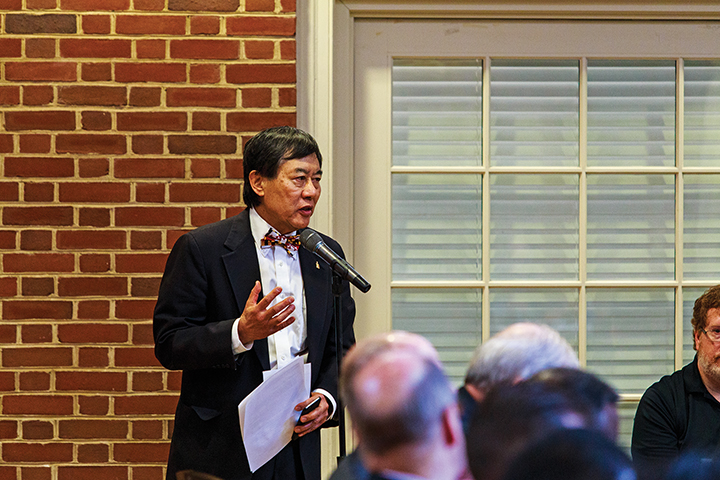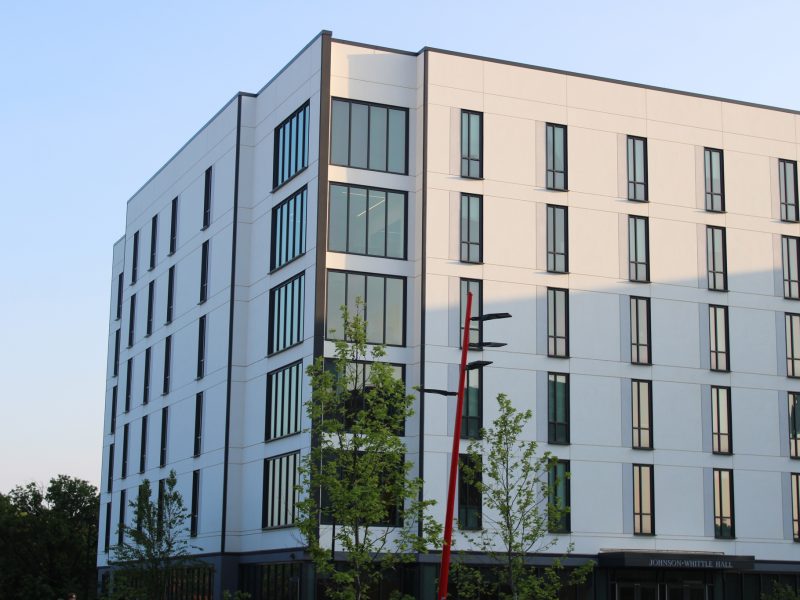University President Wallace Loh consistently emphasizes innovation.
Sometimes the innovations are large, such as the creation of the Brendan Iribe Center for Computer Science and Innovation, the concept of a “Greater College Park” with new economic development or partnerships with federal agencies and outside universities.
And sometimes those innovations are small: the size of a tiny, gold turtle pin.
Since Loh’s assistant first came up with the idea of passing out turtle pins to students and faculty he meets on the campus — an idea he calls a “brilliant innovation in communication” — Loh estimates he’s passed out about 3,000 pins himself, creating “essential” conversations with 3,000 new people.
In his five years at the helm of this university, Loh has navigated challenges and celebrated successes. He dealt with a data breach and a controversial athletic conference move while striving to improve the university’s quality, academics and student experience. In a report and reflections released to the student body Thursday morning, Loh looked back on his first five years of presidency, listing institutional accomplishments and areas for improvement.
Moving forward hasn’t always been simple, Loh said, citing the “political firestorm” that came from switching from the Atlantic Coast Conference to the Big Ten, but it’s the problems without clear solutions that keep him awake at night.
“Challenges like the Big Ten, there’s a solution. … Others, they would require little fixes that would take 100 years to solve,” he said. “Those with no obvious solutions are the most challenging. All you can do is manage them: Repair here and repair there, one at a time.”
In the report, Loh lists three areas of immediate concern for the university moving forward: the risk of deferred maintenance of the physical campus, risk of deferred maintenance of the virtual campus and the risk of a data breach.
“The most complex issues that one faces in societies or at the university — they don’t have solutions,” he said. “One does not always solve problems. One manages problems.”
Still, as president, Loh was able to address prominent university issues to some success, including improving pedestrian safety on Route 1, limiting underage and high-risk drinking among university students and altering the university’s system for responding to sexual misconduct.
Along the way, Loh showed an increased willingness to work with students, said Student Government Association President Patrick Ronk.
“He’s definitely improved in how he gets feedback from the student body. It’s clear that he wants to work with them, rather than just working from his house and doing whatever he wants to do,” Ronk said. “He’s grown a lot in that area.”
In the report, he acknowledges areas with room for improvement, including attracting and maintaining a more diverse faculty, creating a “thriving” workplace for faculty and staff, modernizing the university and developing “Greater College Park” in an effort to strengthen the surrounding area of the campus.
It’s this Greater College Park initiative that Ronk described as what will likely become Loh’s legacy at the university.
“President Loh is a transformative guy: He’s changing how the campus looks, how College Park as a whole looks, and I think that’s what he’s going to be remembered by,” Ronk said. “It’s making the university more alive and changing College Park into a big, actually good college town.”
Ken Ulman, the university’s economic development strategist, applauded Loh for putting the tools and team in place to be able to deliver a real estate and economic development vision.
“The first five years of his presidency, he was laying down the groundwork, starting the construction progress, and now we’re incredibly poised for a positive transformation,” Ulman said. “Over the next five years, we will truly become one of the best university towns in the country.”
Loh said he has never forgotten a piece of advice his mother shared with him at a time when he was struggling to make the transition from faculty member to administrator: “There are those who sing and dance,” she told him, “and there are those who enable others to sing and dance.”
As university president, Loh said, he might facilitate others, provide funding or cheer, but it’s not about him anymore.
“Now, it is not my job to sing and dance; my job is to enable others — the students, faculty and staff — to sing and dance,” Loh said. “And the satisfactions I get from this job are really derivative: They are derived from their successes, not mine.”



